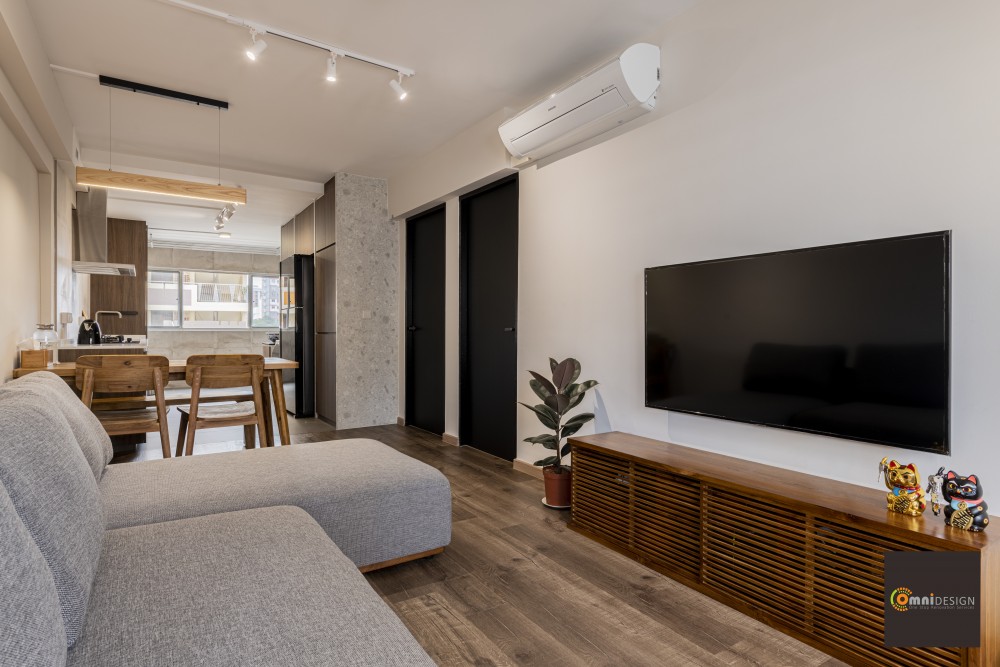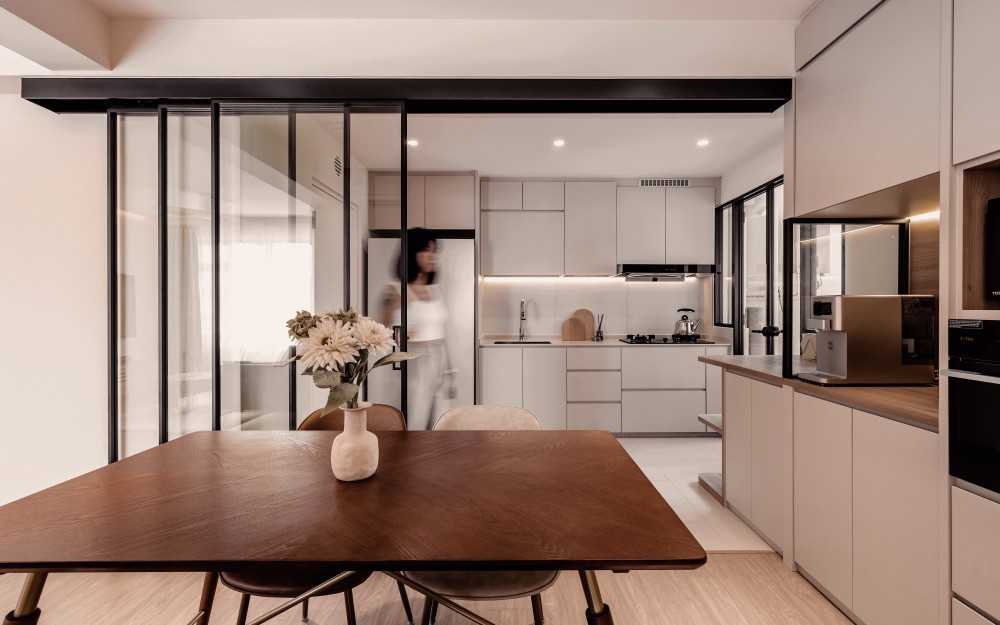How To Make Your Home Uniquely Singaporean
In the vibrant city-state of Singapore, where cultures converge and traditions intertwine, the design of one’s home serves as a canvas for expressing personal identity and cultural roots.
With its rich cultural diversity and architectural heritage, Singapore offers a unique blend of traditions and modernity that can be seamlessly integrated into interior spaces.
In this article, we explore how to infuse your home with Singaporean elements, creating a space that reflects the city-state’s rich heritage while embracing contemporary living.
Incorporating Singaporean Design Elements Into Your Home
Singaporean design elements offer a unique blend of cultural heritage and modern aesthetics, providing homeowners with a wealth of inspiration to create spaces that are both stylish and meaningful.
From the intricate motifs of Peranakan tiles to the timeless charm of traditional shophouse architecture, Singapore’s rich cultural tapestry offers a myriad of opportunities for infusing homes with local flair.
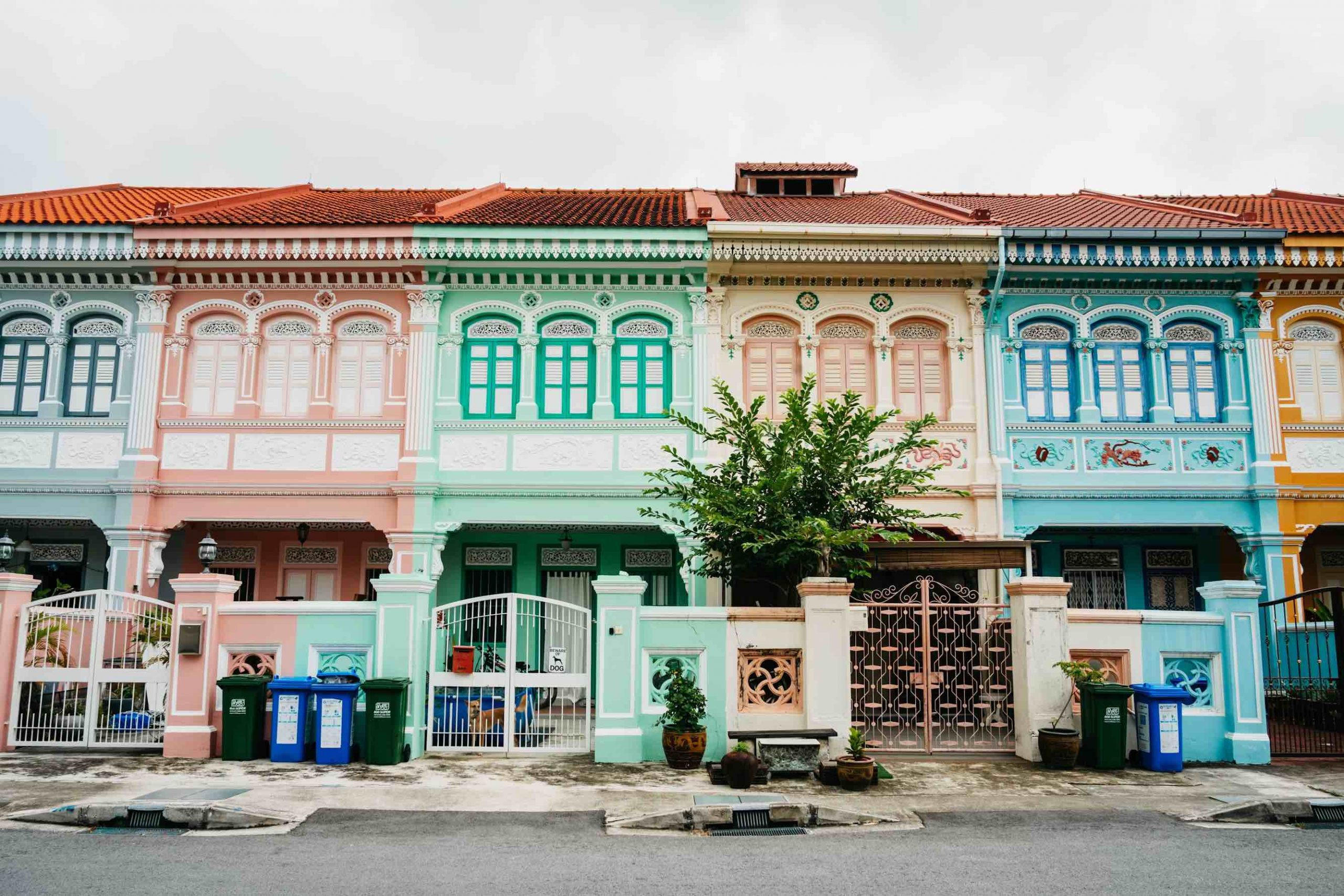

In this section, we delve into the essence of Singaporean design, exploring how to integrate these elements seamlessly into interior spaces to evoke a sense of nostalgia and celebrate the city-state’s vibrant cultural heritage.
Peranakan Influences
Singapore’s Peranakan culture, a vibrant fusion of Chinese, Malay, and other influences, is renowned for its intricate motifs and vibrant color palette.
Incorporating Peranakan tiles, colors, and patterns into interior design adds a touch of nostalgia and cultural richness to the home.
These elements, with their ornate designs and vibrant hues, serve as a tribute to Singapore’s multicultural heritage, inviting residents and guests to immerse themselves in the city’s rich tapestry of traditions.
Here are some examples of how to incorporate Peranakan elements in your home:
Peranakan tile backsplash
Install Peranakan tiles as a backsplash in the kitchen or bathroom. The vibrant colors and intricate patterns of these tiles can serve as a focal point in the room, adding a pop of color and cultural richness to the space.
Accent wall
Create an accent wall using Peranakan tiles in a living room or dining area. Choose a bold pattern or a mix of different tile designs to make a statement and showcase the beauty of Peranakan craftsmanship.
Peranakan flooring
Use Peranakan tiles to cover the flooring in entryways, corridors, or outdoor patios. The geometric patterns and vibrant colors of these tiles can add visual interest and personality to otherwise plain or overlooked spaces.


3-room Resale at Telok Banglah ($50,000) by Ezy Space
Decorative accents
Incorporate Peranakan tile motifs into decorative accents such as coasters, trivets, or wall art. These small touches can add a hint of Peranakan charm to any room without overwhelming the space.
Furniture upholstery
Select upholstery fabrics with Peranakan-inspired patterns for furniture pieces such as chairs, ottomans, or throw pillows. These fabrics can add a touch of whimsy and cultural flair to your seating arrangements.
Servingware and tabletop decor
Use Peranakan-inspired tableware, such as plates, bowls, or serving trays, to add a colorful and festive touch to dining tables or kitchen countertops. Mix and match different patterns and colors for a playful and eclectic look.
Window treatments
Choose curtains or blinds featuring Peranakan-inspired prints or colors to dress up windows and enhance the overall aesthetic of the room. These window treatments can tie the design scheme together and create a cohesive look.
Peranakan-inspired artwork
Hang artwork featuring Peranakan motifs or themes on walls to add visual interest and cultural significance to the space. Whether it’s a painting, print, or textile art, incorporating Peranakan-inspired artwork can elevate the ambiance of any room.
Elements From Traditional Singaporean Shophouses
Traditional Singapore shophouses, with their jalousie windows and colorful facades, offer architectural inspiration for modern homes.
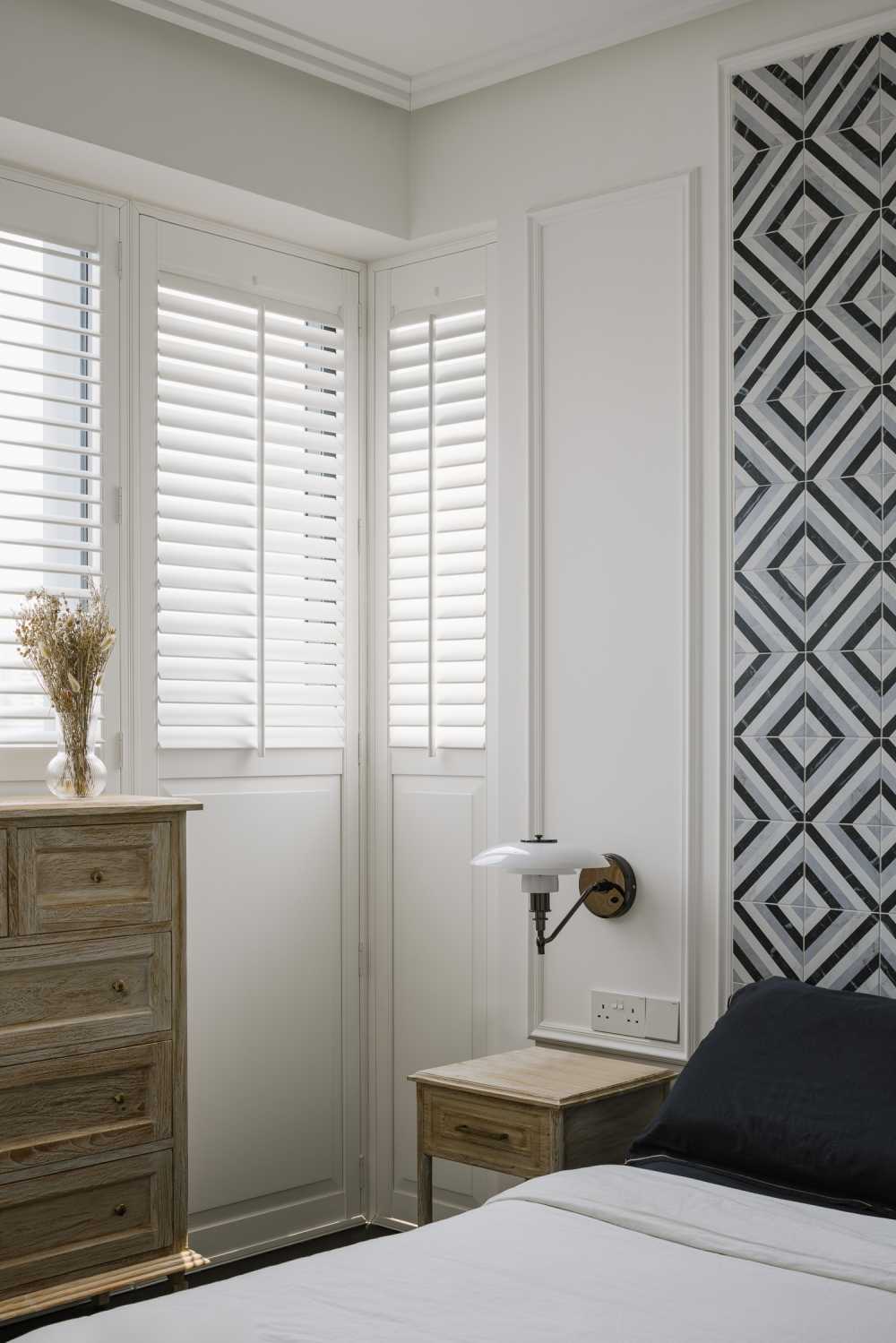

Stirling Residences ($81,000) by The Interior Lab Pte Ltd
By integrating elements reminiscent of shophouse designs, homeowners can add character and authenticity to contemporary living spaces.
These architectural features not only pay homage to Singapore’s historical past but also provide practical benefits, such as improved ventilation and natural light, making them ideal for modern urban living.
Here are some examples of how to incorporate shophouse designs into your home:
Jalousie windows
Install jalousie windows in living rooms, bedrooms, or dining areas to evoke the charm of traditional shophouses. These windows not only add character to the space but also provide ventilation and natural light control.
Truly traditional jalousie windows may be hard to find today – feel free to opt for modernized versions of jalousie windows with sleek frames and improved functionality to blend seamlessly with contemporary interiors.
Colorful facades
If you’re able to, use vibrant colors to paint exterior walls or select colorful facade materials such as ceramic tiles or decorative panels to mimic the look of traditional shophouses.
Incorporate architectural details inspired by shophouse facades, such as ornate trim work, decorative moldings, or intricate carvings, to add visual interest and authenticity to the exterior of the home.
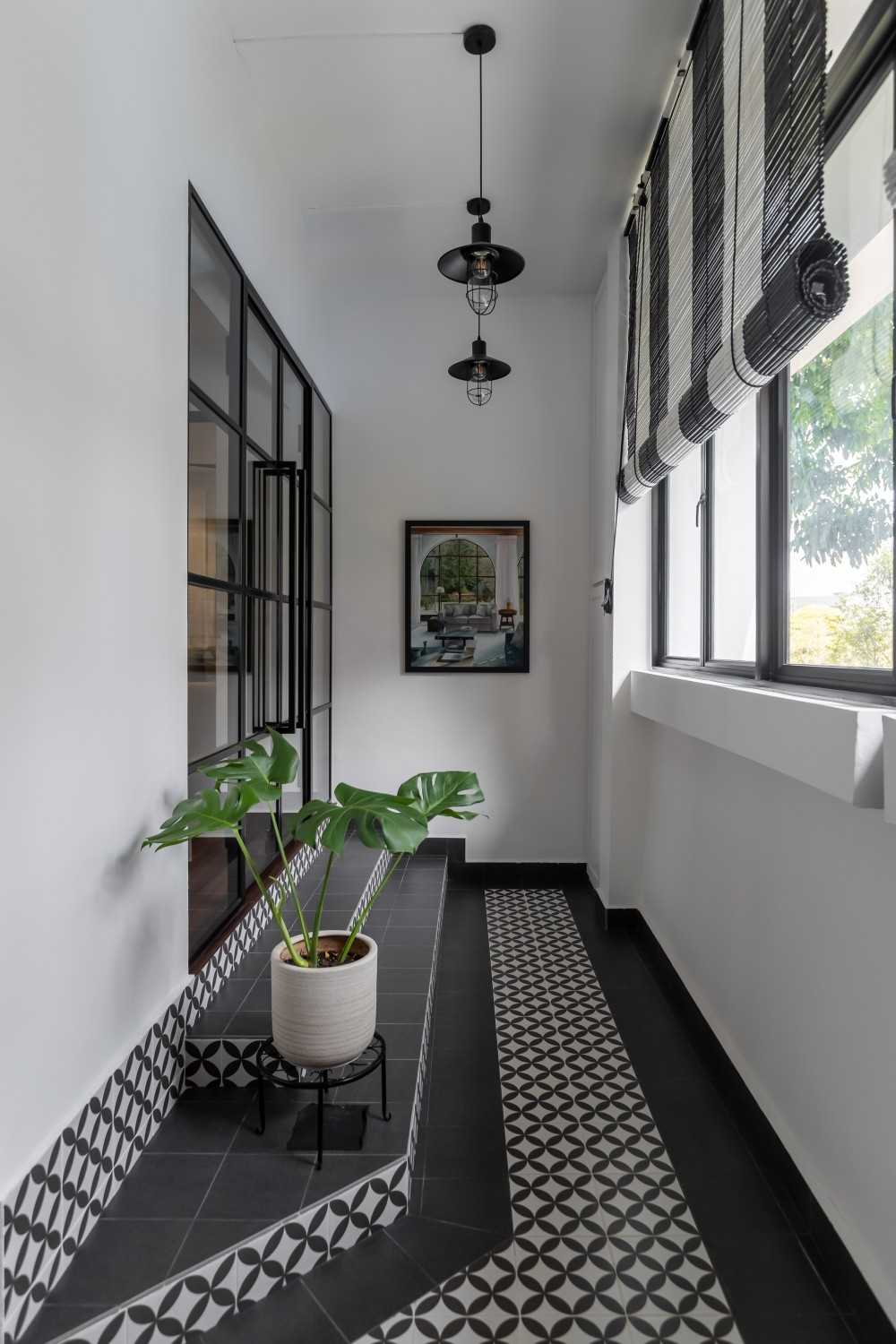

Jumbo House ($120,000) by MYD Pleasant Home Design
Shophouse-inspired doors
Choose doors with decorative panels or latticework reminiscent of traditional shophouse doors to create a grand entrance and enhance curb appeal.
Consider installing sliding or folding doors with shophouse-inspired motifs to add a touch of elegance and functionality to interior spaces, such as dividing living areas or connecting indoor and outdoor spaces.
Courtyard or atrium
For those living in a landed property, where you have the luxury of space, design a central courtyard or atrium within the home to emulate the open-air layout of traditional shophouses.
This space can serve as a private oasis for relaxation and social gatherings, surrounded by lush greenery and natural light.
You can also install a skylight or glass roof over the courtyard to maximize natural light penetration and create a seamless connection between indoor and outdoor living areas.
Incorporating Rattan And Bamboo Into Your Home
Rattan furniture pieces and bamboo blinds bring a tropical flair to interior spaces, evoking the relaxed ambiance of Singapore’s climate.
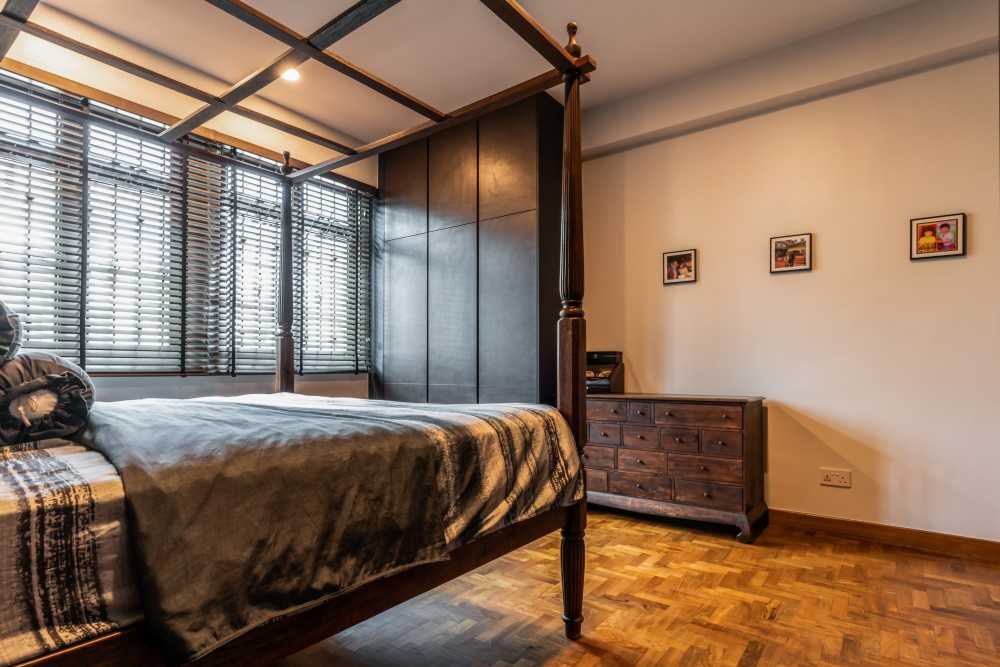

Hume Park ($50,000) by NID Design Group Pte Ltd
These natural materials, with their timeless appeal and durability, contribute to a harmonious blend of modern aesthetics and traditional craftsmanship, creating a warm and inviting atmosphere in the home.
What to keep in mind about rattan furniture and bamboo blinds:
Rattan furniture is suitable for use in various indoor areas such as living rooms, dining rooms, bedrooms, and even covered outdoor spaces like patios or screened-in porches.
It works well in both contemporary and traditional design schemes, adding warmth and texture to the space.
While rattan furniture is durable and can withstand moderate humidity levels, it may not be suitable for areas with extremely high humidity or direct exposure to moisture.
Avoid placing rattan furniture in bathrooms, kitchens, or outdoor areas where it may be exposed to rain or excessive moisture, as prolonged exposure can cause the material to warp or mold.
On top of that, rattan furniture should not be placed in direct sunlight for prolonged periods, as exposure to UV rays can cause the material to fade or become brittle over time.
Regular maintenance is key to keeping rattan furniture in good condition. Wipe down rattan surfaces with a damp cloth to remove dust and debris, and occasionally apply a coat of furniture polish or protective sealant to maintain its natural luster.
Bamboo blinds are suitable for use in living rooms, bedrooms, dining rooms, and home offices, providing privacy and light control while adding a touch of natural beauty to the space.
Similar to rattan furniture, bamboo blinds may not be suitable for areas with high humidity or direct exposure to moisture, such as bathrooms or kitchens.
Excessive moisture can cause bamboo blinds to warp, mold, or develop mildew, compromising their appearance and functionality.
How To Incorporate Art And Decor Reflecting The Singaporean Heritage Into Your Home
Singapore’s rich cultural tapestry is reflected not only in its architecture and cuisine but also in its art and decor.
From elegant Chinese calligraphy to intricate Malay woodcarvings, the city-state’s heritage is celebrated and preserved through various artistic expressions.
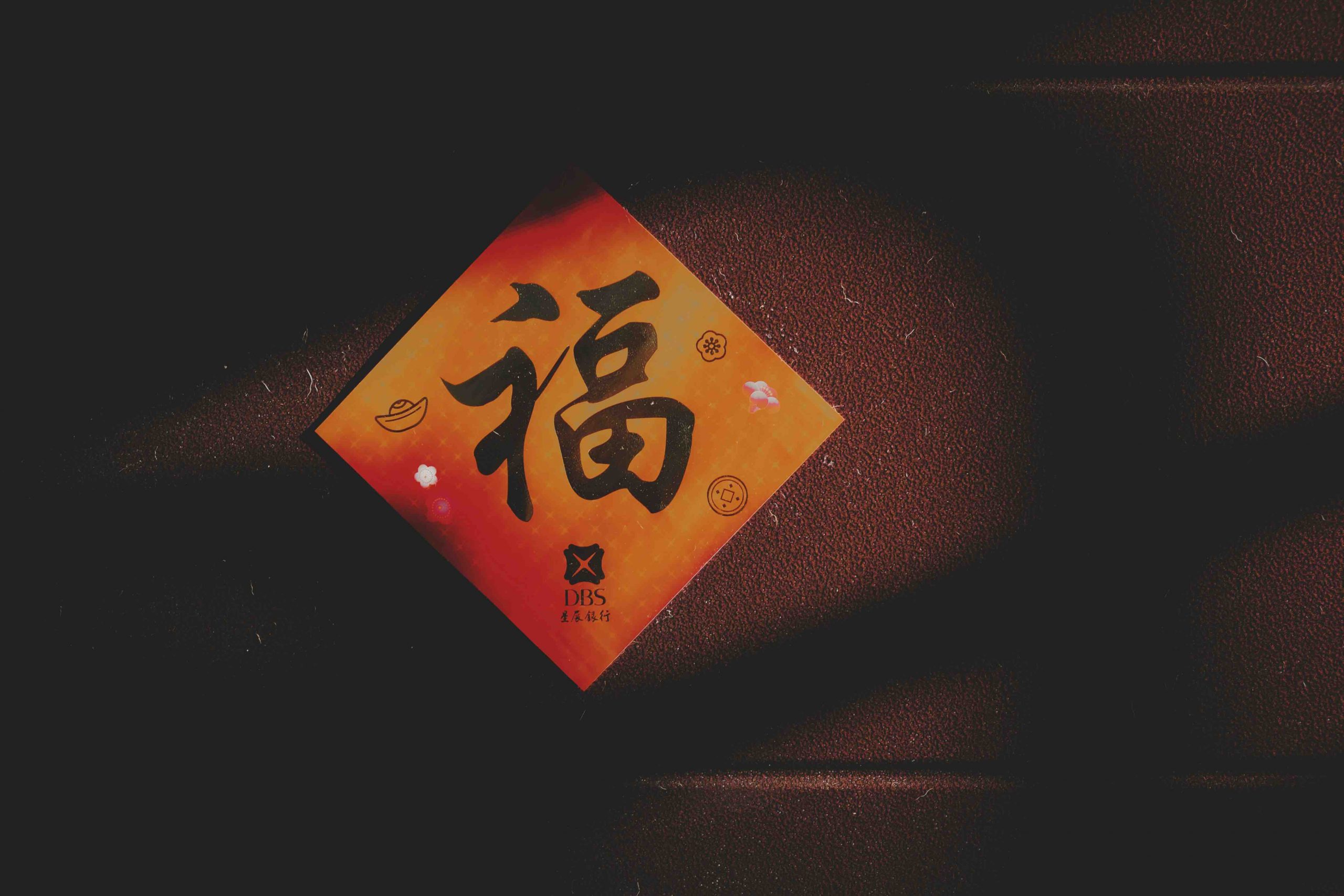

Here are some examples of heritage-rich art that you can incorporate into your home:
Chinese calligraphy
Chinese calligraphy, with its graceful strokes and poetic expressions, adds a touch of elegance and cultural significance to home decor. Whether displayed as wall art or incorporated into decorative pieces, calligraphy imbues spaces with a sense of tradition and refinement, honoring the artistry of the written word.
Malay woodcarvings
Malay woodcarving is a traditional art form characterized by intricate patterns and motifs, often depicting floral designs, geometric shapes, and cultural symbols.
While traditionally used to decorate furniture, door frames, and architectural elements in Malay homes, there are other ways to incorporate Malay woodcarving into contemporary interior design.
For example, homeowners can display carved wooden panels or wall hangings featuring Malay motifs as decorative accents in living rooms, dining areas, or bedrooms.
Additionally, carved wooden furniture pieces, such as coffee tables, side tables, or bed frames, can add a touch of heritage and craftsmanship to interior spaces without the need for extensive renovations.
Malay batik
Malay batik, with its intricate patterns and vibrant colors, is a traditional textile art form that holds cultural significance in Malay communities. Batik fabrics are often used in home decor items such as tablecloths, cushion covers, and wall hangings, adding a touch of Malay heritage to interior spaces.
Vintage posters
Vintage posters depicting old Singaporean landmarks, cultural events, and nostalgic scenes offer a glimpse into the city’s past and evoke a sense of nostalgia. Whether showcasing iconic landmarks like the Merlion or depicting scenes from traditional festivals, these posters serve as conversation starters and focal points in home decor, sparking memories and conversations about Singapore’s history and heritage.
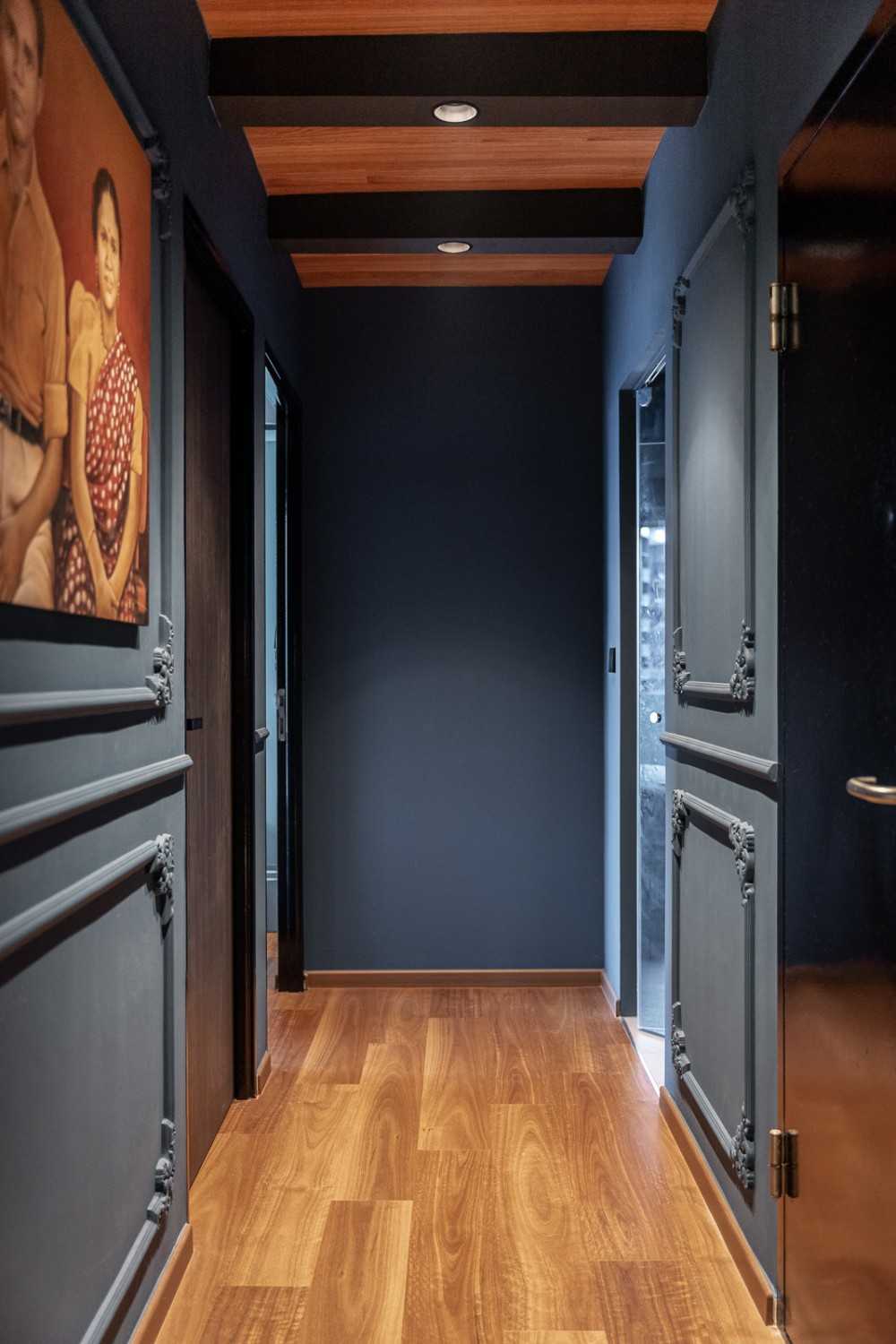

310C Punggol Walk ($55,000) by Ideology Interior
How To Blend The Traditional With The Modern
While some homeowners may appreciate the charm of traditional Singaporean design, others may seek to modernize their living spaces while still honoring their cultural heritage.
Balancing traditional elements with modern aesthetics can create a harmonious and stylish home that feels both timeless and contemporary.
How do you do this?
Step 1: Start by selecting key traditional pieces that hold significance or sentimental value.
Begin by identifying traditional pieces that hold significance or sentimental value, such as heirloom furniture, cultural artifacts, or handmade crafts passed down through generations.
Consider the cultural background and historical significance of each piece, as well as its aesthetic appeal and potential impact on the overall design scheme.
Choose pieces that resonate with your personal taste and style preferences while reflecting the cultural heritage you wish to celebrate in your home.
Step 2: Integrate modern furnishings and decor elements
Once you’ve selected your key traditional pieces, complement them with modern furnishings and decor elements to create a harmonious blend of old and new.
Choose modern furniture pieces with clean lines, minimalist designs, and neutral colors to provide contrast to traditional items and add a contemporary touch to the space.
Incorporate modern decor accents such as sleek light fixtures, abstract artwork, or minimalist sculptures to enhance the overall aesthetic and create visual interest.
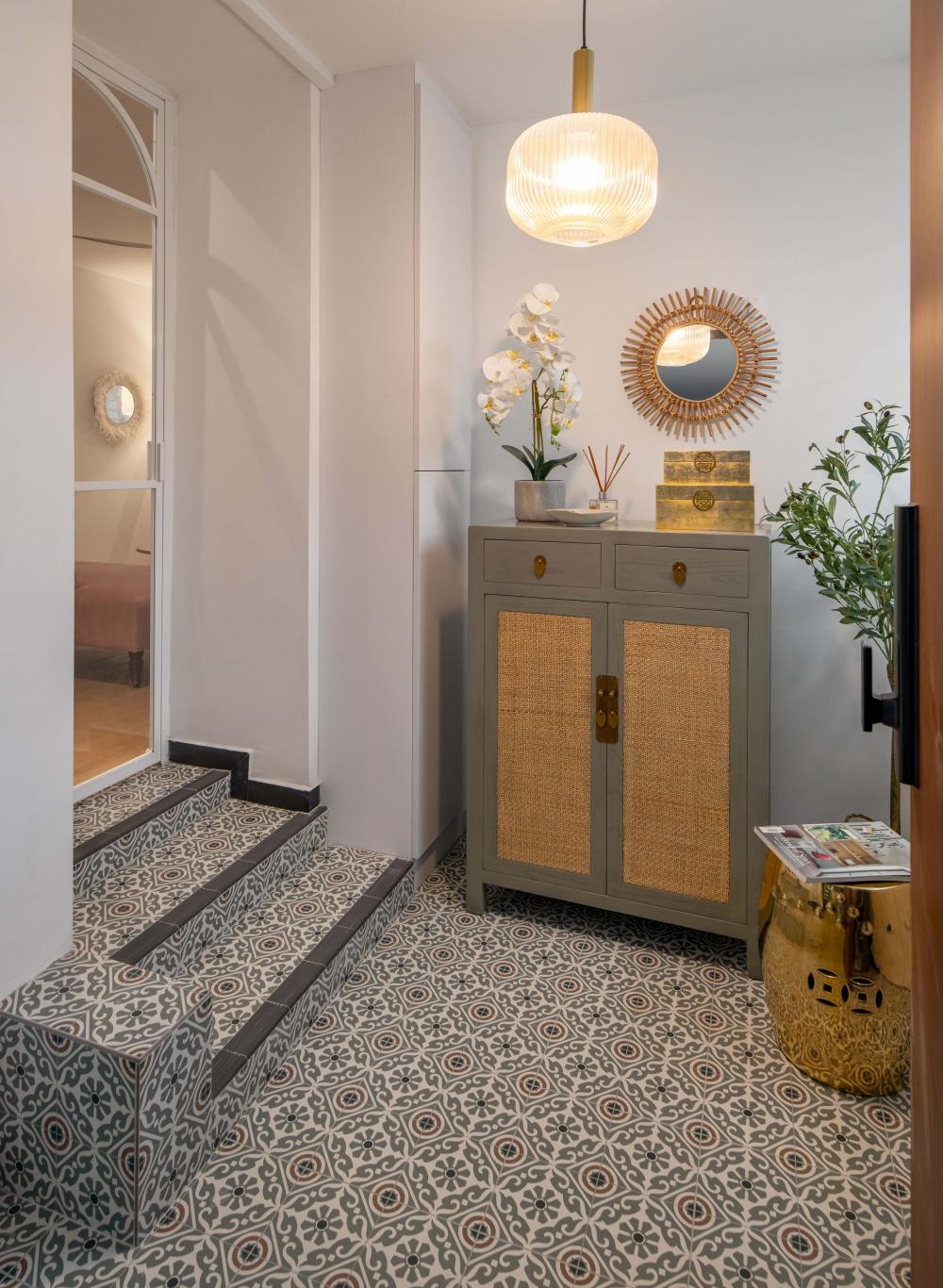

109 Clementi ($80,000) by The Interior Lab Pte Ltd
Step 3: Experiment with a variety of textures and materials
To add visual interest and dimension to the space, experiment with a variety of textures and materials in your furnishings and decor.
Mix natural materials such as wood, rattan, and stone with sleek metals, glass, and acrylic to create a dynamic interplay of textures and finishes.
Consider incorporating textiles such as plush rugs, velvet cushions, or linen drapes to add softness and warmth to the space while introducing additional texture.
Step 4: Consider scale and proportion
Pay attention to scale and proportion when arranging furniture and decor items in the space to ensure a balanced and cohesive look.
Choose furniture pieces that are appropriately scaled to the size of the room and arrange them in a way that allows for easy traffic flow and conversation.
Balance large, statement pieces with smaller accents to create visual harmony and prevent the space from feeling overwhelming or cluttered.
Step 5: Embrace technology
Integrate smart home devices and appliances into the home in a seamless and unobtrusive way to enhance convenience, comfort, and efficiency.
Choose smart home solutions that complement the design aesthetic of your space, such as hidden outlets, discreet sensors, or voice-activated controls.
Incorporate technology into everyday objects and furnishings, such as smart mirrors, programmable lighting, or built-in speakers, to seamlessly blend modern amenities with traditional decor.
By following these guidelines and principles, homeowners can effectively blend traditional and modern elements in their home design, creating a space that is both culturally rich and visually captivating.
A Final Word On Infusing Your Home With Singaporean Elements
In conclusion, designing a home with Singaporean flair allows residents to connect with their cultural identity and create a space that reflects their unique heritage.
By incorporating local design elements, artworks, and cultural traditions, homeowners can infuse their living spaces with warmth, character, and a sense of belonging.
Embracing Singaporean heritage in home design not only honors the past but also celebrates the vibrant cultural tapestry that defines the city-state’s identity.
Want to check out home renovation projects for more inspiration? Browse interior design ideas on Hometrust, or click the button below to get connected with expert designers!
Renovating soon? Let Hometrust recommend the best interior designers.
If you are reading this, you are probably wondering how you can create your dream home.
Here’s the thing, everyone’s needs and requirements for their home renovation is different. A designer that may work for someone else, may not quite work for you.
At Hometrust, we’re here to help match top rated designers, recommended by past homeowners to you through our data-driven and matching algorithm.
Whether you are looking for partial renovation or a full fledge overhaul, we’ll be able to recommend you top designers to match your renovation requirements and lifestyle.
Recommendations and free and you can simply start by helping us understand your needs below!
Get RecommendationsRenovate safe!
The Hometrust Team


